|
Many of us know of The Clancy Brothers and Tommy Makem, but have you ever heard their story? It’s a quite a tale. And it all starts with two Irish brothers seeking their fortunes in New York City. Paddy and Tom Clancy didn’t mean to start a worldwide movement when they arrived in New York in 1951. They just wanted to be actors. And so they were, landing some roles on and off Broadway and on television. Creative and ambitious, they even started their own company, Trio Productions, and rented a theater to produce Irish plays. But that’s an expensive endeavor. So they needed to raise some money. What could they do? How about sing the old songs they learned as kids back in County Tipperary? They gathered some friends and called it the Swapping Song Fair. Soon musicians well-known in the American Folk Revival - Pete Seeger, Woody Guthrie, and Jean Ritchie - were joining in. Sometime in 1955, the Clancys met folk music collector Diane Hamilton in New York. When they heard she planned to travel to Ireland to record rare Irish songs, they recommended she stop by their parents’ house in Carrick-on-Suir. She took them up on it. At the Clancy’s she recorded songs sung by members of the family including the youngest brother Liam. Her next stop would be the home of Sarah Makem in County Armagh, Northern Ireland. She invited Liam to join her on the trip. That’s where Liam met Sarah’s son Tommy, which started a lifelong and productive friendship. The Band of Brothers Grows By 1956, Liam and Tommy were also in New York looking for acting jobs and singing on the side with the older Clancys. Later that year Paddy, Tom, and Liam Clancy, along with Tommy Makem recorded a collection of Irish rebel songs called The Rising of the Moon. This first album won local success and helped launch Paddy’s new company, Tradition Records. Still focused on their acting careers, it surprised them when more and more singing gigs rolled in. In 1959, they recorded their second album, this one drinking songs called Come Fill Your Glass With Us. By this time Liam had honed his guitar skills and Tommy had added his tin whistle and uilleann pipes. This album was a hit and launched them into bigger performances in New York, Boston, and Chicago. Still their group had no actual name. They tossed around several ideas but couldn’t agree. A nightclub owner finally settled that question. He needed something to put on the marquee. So he decided to call them The Clancy Brothers and Tommy Makem. Meanwhile back home in Tipperary, Mrs. Clancy read an article about the freezing wind, snow, and icy conditions in New York and knitted the boys cozy Aran sweaters. They bundled up in them one frosty night before going out to a gig. When he saw the sweaters, their manager went wild. That was just the look he was looking for! And that is why they wore those same sweaters to their famous appearance on the Ed Sullivan Show on March 12, 1961, before an audience of 40 million viewers. After that night, the musical career of The Clancy Brothers and Tommy Makem (and Aran sweater sales) took off. Soon they had a five-year contract with Columbia Records, a $100,000 advance, and a new record called A Spontaneous Performance Recording. To top it off, Pete Seeger joined them on banjo. This album earned a Grammy nomination for Best Folk Recording in 1962. The singing Irishmen appeared on major radio and television talk-shows and even played an acclaimed concert at Carnegie Hall. In 1962 they toured around the world including Ireland, England, Canada and Australia. And they played for President John F. Kennedy in 1963. Their fame and success endured throughout the 1960s because their timing fit in with the American Folk Music Revival. The trend had started in the 1930s and ‘40s with artists like Pete Seeger and Woody Gutherie. It later included performers like Peter, Paul and Mary, Joan Baez, and Bob Dylan. The Clancy Influence Dylan, who spent a lot of time with the Clancys in New York in the early ‘60s, said, “Irish music has always been a great part of my life because I used to hang out with the Clancy Brothers. They influenced me tremendously.” All the great bands we love to hear at Irish festivals today have The Clancy Brothers and Tommy Makem to thank for the popularity of the genre. Irish author Frank McCourt wrote in 1999, “They were the first. Before them there were dance bands and show bands and céilidhe bands...but not since John McCormack had Irish singers captured international attention like the Clancy Brothers and Tommy Makem. They opened the gates to the likes of the Dubliners and the Wolfe Tones and every Irish group thereafter.” Tommy Makem left the Clancys in 1969 to pursue a solo career. The Clancy brothers continued to perform and record albums in various combinations of family members and friends. Later in the mid-70s, Liam Clancy and Tommy Makem teamed up and performed together for 13 years. Now their sons keep the music going into the second generation. Finbarr Clancy (Bobby’s son) is a member of The High Kings. Dónal Clancy (Liam’s son) is a former member of Danú and Solás and now performs solo. Rory Makem (Tommy Makem’s son) is a solo performer who often teams up with Dónal Clancy too. All this history behind Rory Makem makes his upcoming concert at Five Points Public House in Utica a significant opportunity for traditional Irish music fans. It takes place March 19th at 7:00pm with doors opening at 6:00pm, and you can get your tickets right here. Rory played at Five Points Public House with Dónal Clancy last fall. He’s an amazing performer and storyteller on top of being a brilliant musician. Here’s a sample of his music:
1 Comment
The Great American Irish Festival is heading into its 16th year at the end of July and it’s shaping up to be one of the best ones yet. There’s something to do, see, and listen to around every corner, but in this article I’ll focus on the Cultural Building, because for the first time ever, Craobh Dugan is in charge of organizing it. We gathered a creative and ambitious bunch last winter and we’ve been meeting, emailing, and making things ever since. Here are some of the fun and fascinating things you’ll find in the Cultural Building this year:
Ongoing Exhibits The mini museum display boards will return, but even bigger and better this year. We’ve added interesting research about Gaelic sports, Irish poets, Irish tunes and instruments, and Irish people in Mohawk Valley history to the popular topics from last year - notable Irish women, Irish words in the English language, and political cartoons of the 18th and 19th centuries showing the cruel racist attitudes toward the Irish at that time. A trivia quiz with a prize for the winner. A photo contest where you can vote for your favorites with a $100 prize for the winner. And if you have a photo to enter, click this link to see the rules and registration form. The deadline is July 22. A knitting display and hands-on demonstration of Aran and other Irish stitches. Find out how to say and write your name in the Irish language and wear it proudly on your own name tag, presented by Two Rivers Gaelic League from Albany. Professional genealogist Cindy Wood will give a talk and also be available for 30-minute appointments to help you with individual genealogical research. Learn useful words and phrases in Irish at the Pop-up Gaeltacht. Programs on the Schedule Experience a bodhrán drum circle (on Friday evening). Drum circles have become a popular way to relax and relieve stress and lots of people have bodhráns as souvenirs from their trips to Ireland. Why not put the two together and create an Irish drum circle? Bring your bodhrán and tipper (or your djembe, cajon, or congas if you like) and join in this special session just for drummers. We’ll talk about the benefits of drumming in general and a little about the bodhrán. Then we’ll enjoy a relaxing bodhrán beat. We’ll have a few spare drums if you need one. Create your own Celtic masterpiece at the Sip and Paint with Art & Vine (on Saturday afternoon). All art supplies and a drink are included with your $25 ticket. Find out more here. We’ll be performing our Irish and the Erie program about the history of the Irish workers on the Erie Canal with songs and music. Find out more about this project here. The traditional GAIF Open Session returns once again. All local and visiting musicians who play instruments usually associated with Irish traditional music are invited to join in the open session. We’ve also invited members of the professional bands to join us if they wish. So who knows? We may have some famous musicians joining in. Performers in the Cultural Building Along with all the great bands performing on the Contemporary and Traditional Stages (including Craobh Dugan on the Traditional Stage on Sunday at noon) there's even more music to listen to in the Cultural Building. The Mighty Craic, Deirdre and Jim McCarthy, Gerry Dixon, and Donal O'Shaughnessy. And...we have a few secret surprises planned too. We’re not saying what they are, but you will be enchanted. So hop over to the GAIF website for the full Entertainment Schedule, the Cultural Building Schedule and to buy your advance tickets at a discount price. It’s just incredible all the fun that’s packed into that ticket price. A fresh summer breeze plays with the heavy red drapes on the open windows behind the stage at the Oneida Community Mansion House. The curtains billow and dance behind the two musicians, Amanda Straney and Bill Fahy. They’re members of Craobh Dugan who have created an original program called Soldier’s Joy. Amanda takes up her fiddle and Bill his banjo. Without any electronic amplification they play their first tune, Year of Jubilo. The notes fill this large room built in 1862 by members of the Oneida Community, a religious commune with an appreciation for music and art. The walls and ceiling are decorated with paintings of swirling scrolls and the acoustics amplify better than microphones and speakers could.
These tunes of the Civil War era were new when this room was new and I feel myself transported back in time 16 decades. Between tunes and songs, Bill and Amanda tell us stories about music during the Civil War, including quotes gleaned from well over 100 hours of research into letters written by the people who lived through that time. We hear their own voices over the many years from the letters they wrote to the editors of newspapers in Rome and Utica, and personal notes they sent to friends, sweethearts, and relatives. Some found humor in their circumstances. In the summer of 1863, one Oneida 4th soldier stationed in Virginia wrote a letter published in the Rome Sentinel that began, “With all the labor, suffering and anxiety we as soldiers have to endure, we often have our fun, and well and right heartily do we enjoy it.” He went on to relate the story of a young sentry, intent on following orders, who shot a farmer’s pig that failed to respond with the right countersign when challenged. Some wrote heart-wrenching pleas. A member of the 117th New York Volunteers wrote a letter to the Utica Observer begging the residents of Oneida County to aid the wives and children left behind by fighting soldiers as they struggled to survive without their breadwinners. “I ask in the name of all that is good, remember our families at home are in need, in distress. The winter is at hand, or soon will be. Do something for them, for I tell you, my dear sir, on the lonely picket post, in darkest night, our thoughts go home; and oh, the agonizing thought comes to him, "oh, God! what will become of my wife and family?" And many mentioned music and its profound effects in their letters. Before recorded music, most people learned how to play an instrument. Of course they took their skills with them when they went to war. There were more than 600 regimental bands in the Union Army, which they used for communication, movement coordination, entertainment and morale. Music was a part of the soldiers’ daily life and led to many significant moments like the night the Union and Confederate armies were camped on either side of the Rappahannock River after the Battle of Fredericksburg, Virginia. One band began to play Home Sweet Home and then other bands on both sides joined in. Soon men on both sides were moved to shout and cheer and one solider wrote that he thought the war may have ended there if the two sides hadn’t been separated by the river. A member of the 97th New York captured the sounds of the battlefield when he wrote, “As I sit writing about 2 miles in front, the pickets are firing & I hear the bang bang constantly. There goes a cannon Boom. So it goes day and night. As it is toward evening brass bands are filling the air with very sweet music. At almost every head Qtrs. sometimes half a dozen are heard at once. A strange commingling of sounds, last night we could hear the singing & playing from camps …a mile away.” We’re familiar with what the Civil War looked like thanks to the work of early photographers like Matthew Brady, but Bill and Amanda were able to bring to life the sounds of this historic period by reading the words of the people who lived it and by playing the music they listened to. It’s a vivid and touching way to connect with history and appreciate what people lived through and how they felt. Bill and Amanda have upcoming performances of Soldier’s Joy at the Woodgate Library on July 10 and at the Earlville Library on July 17, 2019. You can also check out the Soldier's Joy Facebook page to find out about future presentations, which will, in a few months, include their new programs revealing their ongoing research into the Southern and Irish perspectives on the war.
On May 4, you’ll have a chance to see in concert the son of a legendary Irish musician. But this son is not just coasting on his father’s reputation.
Dónal Clancy surely inherited a talent for music from his father, Liam Clancy, one of the famed Clancy Brothers. But he has earned his own fame as a musician himself. He was a founding member of Danú and a member of Solas. He toured and recorded with Eileen Ivers and was a guest with The Chieftains on their Tears of Stone Tours in Japan and the US.
Radio host and singer/songwriter Archie Fisher said, "Dónal Clancy is a consummate Celtic guitarist with a voice sympathetic to a range of different song cultures and with a sense of musical arrangement true to the great classical Irish tradition." Clancy released his first solo guitar album Close To Home in 2006, which The Boston Globe dubbed "a sweet masterpiece of melodic grace and riveting groove". The Irish Post awarded his next album, Songs of a Roving Blade, five stars, calling it “folk singing at its best” and “a smashing album that should help to ensure these songs will never be lost.” Clancy's latest album, On the Lonesome Plain, features traditional songs and two of his own compositions, A Strike for Victory commemorating the 1916 Easter Rising and an instrumental piece entitled Máirseáil na Conrach. Reviews can help us form an idea of a musician’s sound, but there’s no substitute for hearing it yourself. So, here’s a recent recording of Dónal Clancy singing his original song The Duke’s Line:
Tickets
Clancy will perform at the Rome Art and Community Center on May 4 at 7:30pm. Tickets are $15.00 in advance, $20 at the door, and $12.00 for Craobh Dugan members current in their dues. You can buy tickets on Eventbrite or from Chris Hoke at either of our sessions. They started with Johnny Allen's Reel and the tunes rolled on from there for a very generous two and a half hours. In between sets, Jerry and Damien filled us in on the history of the music with colorful stories about musical characters back in Ireland. Jerry explained how he uses one elbow to pump air from the bellows to fill the bag under his other elbow. Hence the name: uilleann pipes which translates to "elbow" pipes in English. He said air blown through the player's mouth would be too moist and destroy the reeds in the chanter and pipes. Damien told us that the inside of his accordion is constructed like three harmonicas, one tuned to pitch while one of the others is slightly flat and the other slightly sharp. The bellows force air through the keys which release the notes. At one point Damien played a tune he composed for his wife Sally. It's called Sally Gally and interestingly it's become quite a hit in Japan. A group of Japanese musicians even made a wonderful music video of the tune which you can see here. We want to send out a huge thank you to everyone who was able to come out for this fine house concert and hope even more of you will be able to join us for future ones. Meanwhile, here's a sample of the concert and you can see two more videos on our YouTube Channel here and here. More Photos from the House Concert The English word "galore" comes from the Irish "go leor" which means "enough". And by all accounts there sure was more than enough to do at this year's Great American Irish Festival, affectionately known as the GAIF.
The 15th annual GAIF brought out thousands to celebrate Irish culture July 27-28 at the Herkimer County Fairgrounds. And many Craobh Dugan members were on hand to contribute to the festivities with music, dance, language, and history. The Cultural Cottage, part of the Cultural Building this year, acted as a mini museum crafted by Craobh Dugan members with the help of some friends. They put together displays teaching festival goers about the Irish language, history, musical instruments and Gaelic sports. Eight-year-old Mackensie Griffin researched and created a display about the horses of Ireland. And Mike Carroll gave a musical talk about the history of the Irish in song. Representatives from Two Rivers Gaelic League in Albany were also on hand to translate festival visitors’ names into Irish. And Cindy Wood spoke about tracing Irish ancestry through genealogy. Though Craobh Dugan musicians have performed at all of the GAIFs, this year we played on the Traditional Stage for the first time. Our dancers in full costume demonstrated ceili dances like the Haymaker’s Jig and the Walls of Limerick. Later the dancers gave festival goers a chance to try out the dances themselves over at the Cultural Cottage. Finally, on Saturday evening, Craobh Dugan members offered an Open Session inviting anyone who plays a traditional Irish instrument to join in. This gave us a chance to meet Anton, a singer and guitar player from Australia, who was traveling through the area and found out about the festival online. The GAIF hosted 16 excellent bands with some of the best performers in Celtic music today. Though long time favorites The Elders bid farewell to the GAIF as they are disbanding after this year’s tour, new bands like We Banjo 3 and 1916 made their first appearance. Plenty of food trucks were on hand along with beer and wine tents. Special events like whiskey tasting, comedy acts, and an artistic sip ‘n’ paint gave people even more to do along with the annual massed pipe band march and competition, the state championship highland games, and the 5K Ranger Run. Wow! There’s always a lot going on at the GAIF! On Sunday Craobh Dugan musicians provided music for the Irish Mass held at St. Joseph and St. Patrick Catholic Church in Utica. Deirdre and Jim McCarthy continued the tradition of singing the Our Father in Gaelic and the Mass was offered for our late founder Jim O’Looney and Matt Sullivan, the founder of the GAIF who also passed away recently. Here’s a gallery of photos featuring Craobh Dugan’s activities at the the GAIF. For more photos and lots of videos of the festival check out the GAIF Facebook Page. Craobh Dugan members, together with friends old and new, spent a delightful afternoon at our most recent house concert on Oct. 15 with Caitlín Nic Gabhann and Ciarán Ó Maonaigh. This adorable married duo are not only abundantly talented in music and dance but charming and friendly too. Caitlín's fingers dance over the concertina as nimbly as her feet tap over the floor. And Ciarán's brilliant fiddle playing completes their amazing traditional Irish sound. Between tunes, they each took turns telling funny and touching stories. Some stories about Caitlín's great aunt Peg Pierce gave us an up close picture of the experience of an Irish immigrant to the United States. Peg, who lived to be more than 100, left her little town in Ireland when she was only 16. It was high adventure and lots of dancing on the ocean crossing, followed by a train trip all the way to San Francisco. She never changed her socks the whole time! When she arrived in California her relatives had to soak them off her feet. This one and lots of other tales gave us a glimpse of what our own ancestors' voyages may have been like. Many of our members turned out for this show, but it was especially wonderful to see so many new faces. One young couple were passing through Utica on vacation, saw our listing on Eventbrite.com, and decided to check out the house concert. They said they were very glad they did. During the intermission and after the show everyone nibbled Chris Hoke's legendary blonde brownies, sipped cider, and met new friends. And that is what an Irish "house concert" is all about. Traveling musicians stop by and play for a small group of people in a cozy setting. This time Turning Point Church in Utica provided the perfect intimate space. But at other times it could be at someone's house. Live music, a social atmosphere with friendly company, and a chance to chat with the musicians all work together to create an experience much different from a large venue concert or recorded show. Craobh Dugan tries to arrange house concerts whenever we hear of musicians passing through the area on Northeast tours. So, if you'd like to hear about our next one, like our Facebook page. Many thanks to Deb Putnam for the photos! Videos by Sue Romero.
There's nothing that will put a lilt back in your step so much as an Irish traditional "house concert" and you won't want to miss this one! Craobh Dugan has secured Caitlín Nic Gabhann and Ciarán Ó Maonaigh for a one-day engagement in Utica. These are top musicians, acclaimed by the international press! Read on to find out more about them - and get your tickets while you can!
Acclaimed Irish musicians each in their own right, Caitlín Nic Gabhann and Ciarán Ó Maonaigh
have joined forces to create one of traditional music’s most impressive acts. The pair’s spirited music and dance is rooted in the tradition; brimming with soul and life. Through fiddle, concertina and dance, Caitlín and Ciarán breathe fire into musical pieces, combining their arts with chemistry and energy. Caitlín and Ciarán have a connection as deep as the Irish folk traditions they come out of. Their music is a joyful unleashing of talents learnt at the hearths of their parents, family and friends. Ciarán’s fiddle is complimented by Caitlín’s concertina and dance, her footsteps expertly tapping out the rhythms and elevating the duo’s musical excellence.
Their 2015 debut CD release 'Caitlín & Ciarán' received a 4-star review in The Irish Times.
Here's what people who really know Irish music have said:
We had such a great time at our last house concert and we're hoping you can all come out for this one too! That's why we're keeping the ticket price really low at only $10. The concert will be at Turning Point Church (438 Columbia St., Utica, NY 13502) on Sunday, Oct. 15, at 2:30pm. Tickets are available online through Eventbrite. You can buy them very easily and securely via Pay Pal by clicking the orange button below. See you there!! We had a rare chance to hear two All-Ireland Champion musicians play in a cozy setting at a house concert in April. John Whelan on accordion and Dylan Foley on fiddle brought their amazing energy and refined musical skills together to fill the room with enchanting tunes. Between songs they regaled us with stories and after the concert even played with Craobh Dugan musicians in a session. What a wonderful evening we had! Here's a video showing some highlights from the concert: |
AuthorThe Craobh Dugan-O'Looney blog is written by Sue Smith Romero. Questions? Corrections? Send them on to her at [email protected] Categories
All
|
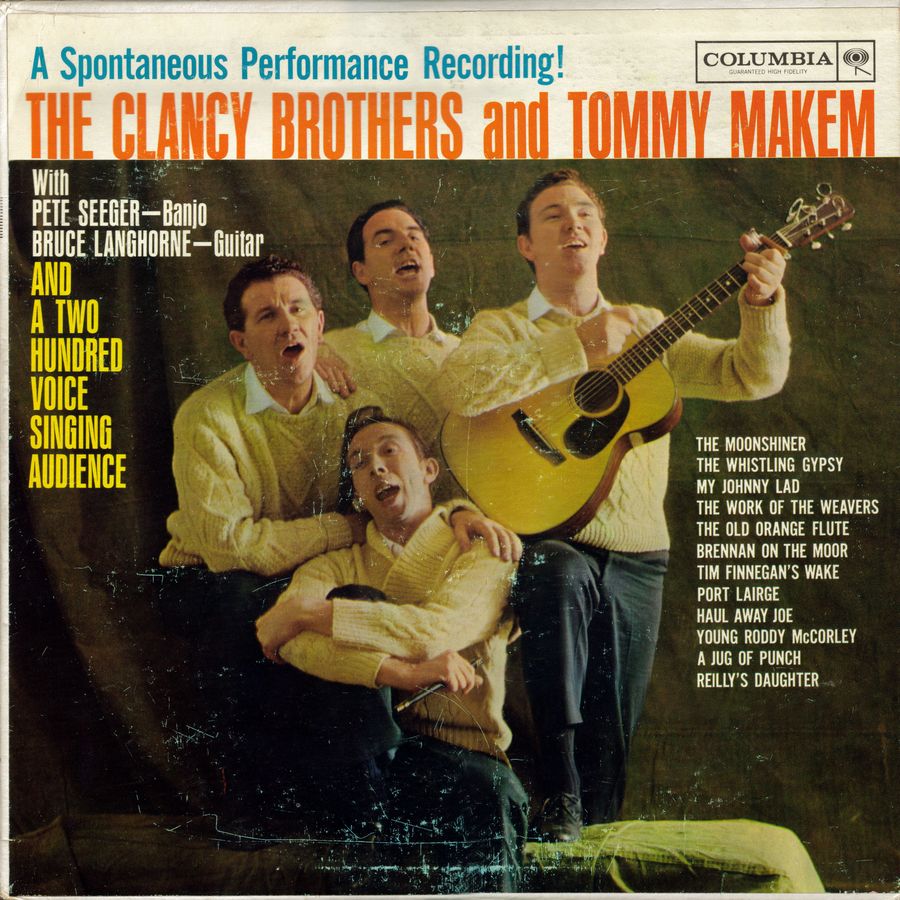
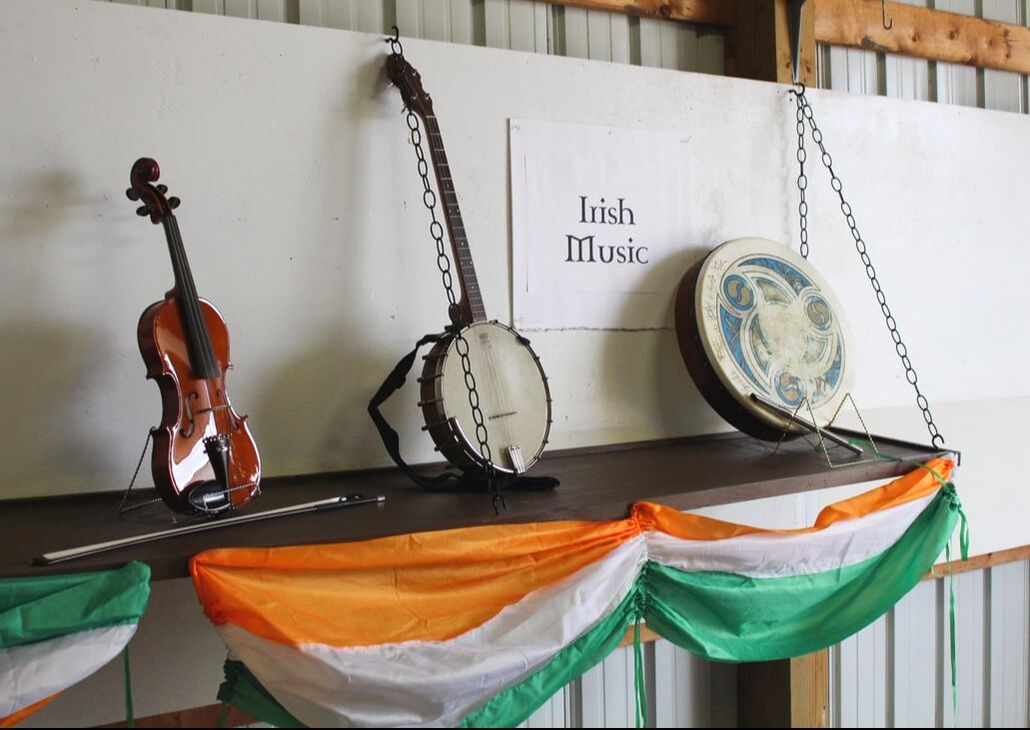
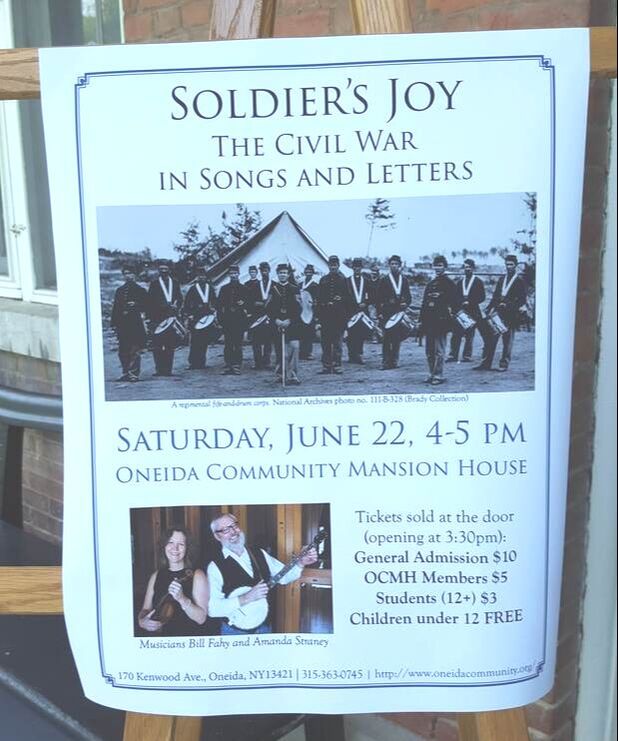
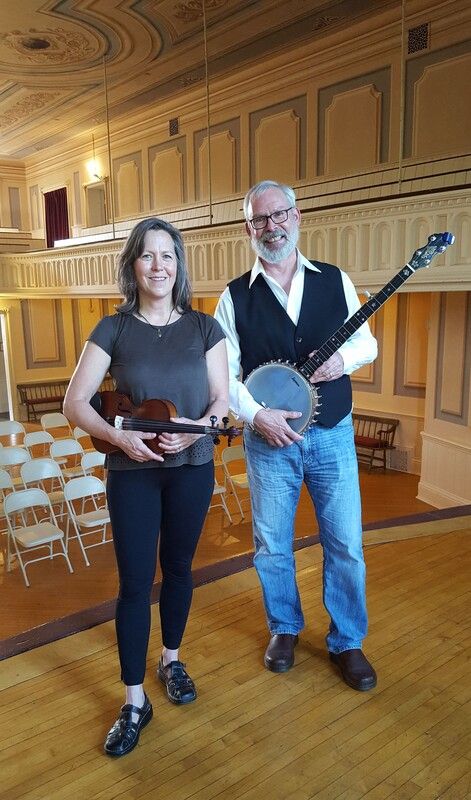
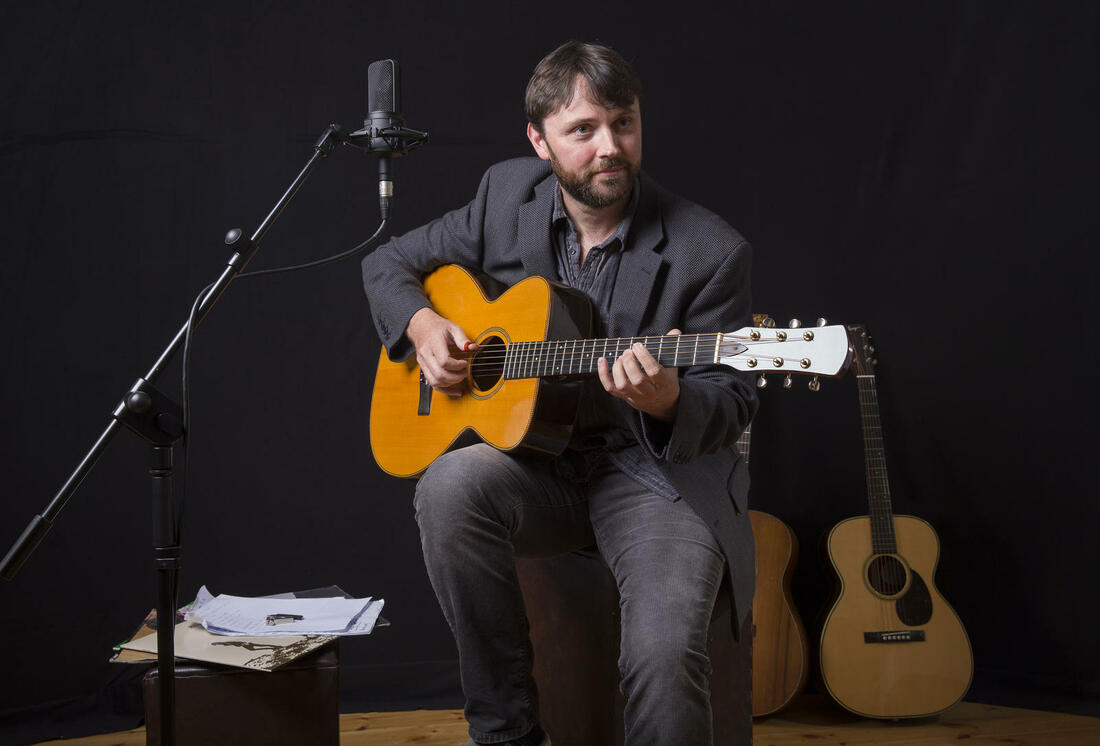
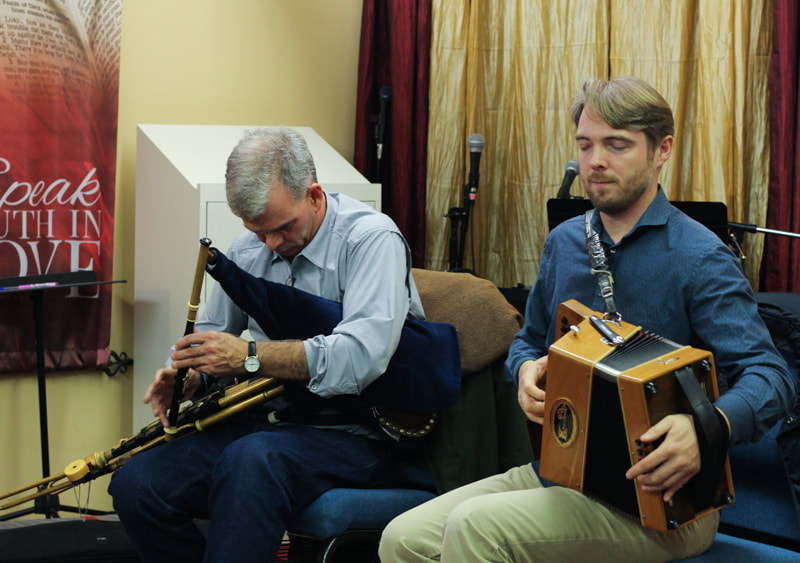
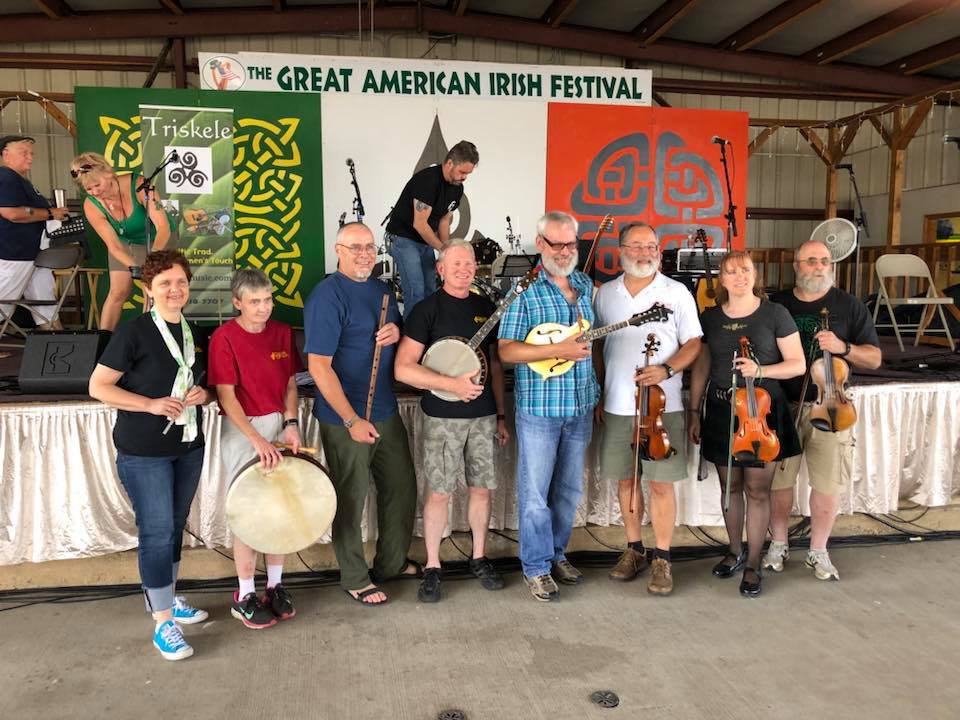
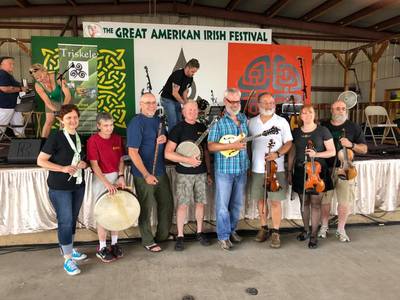
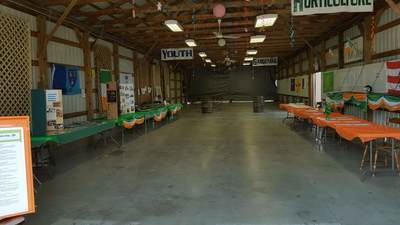
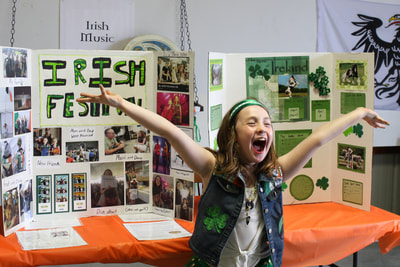
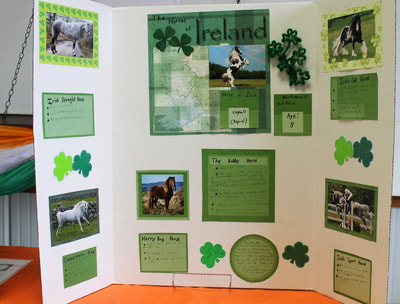
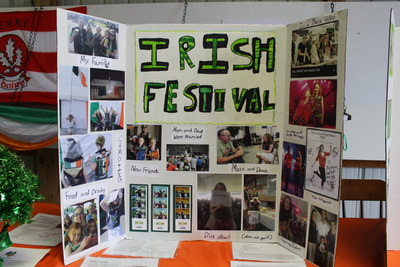
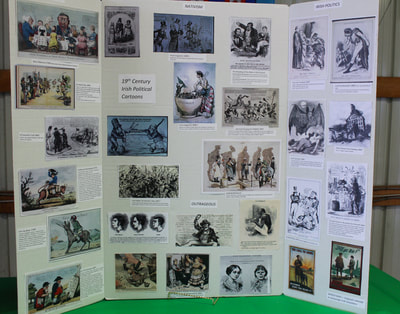
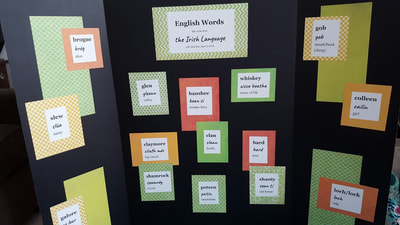
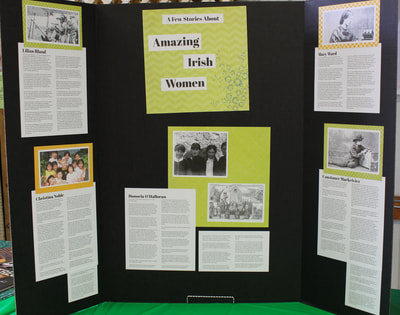
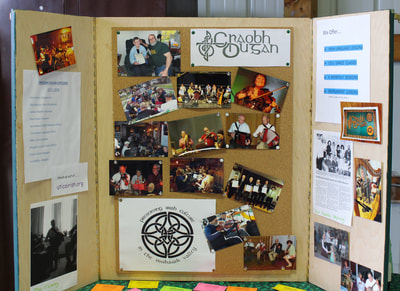
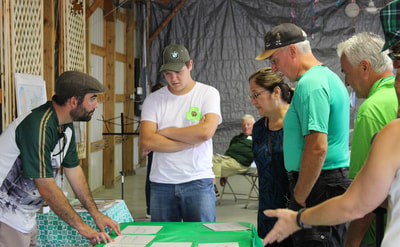
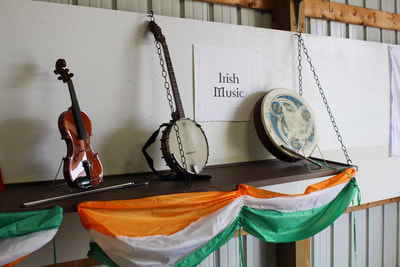
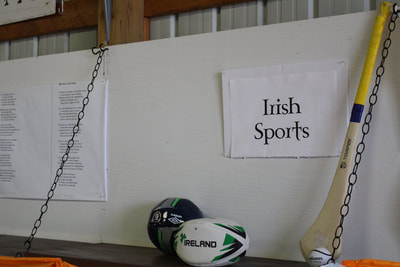
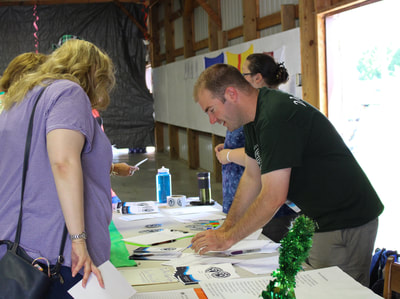
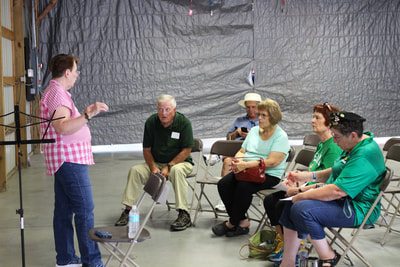
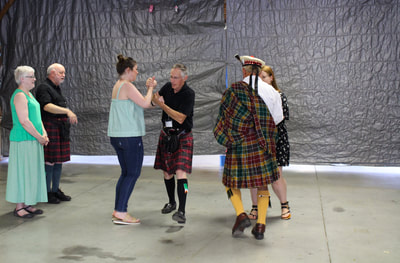
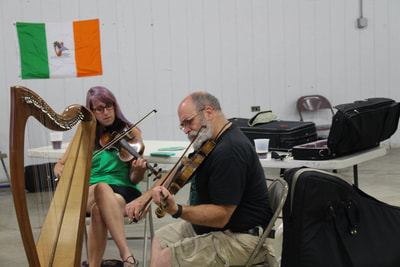
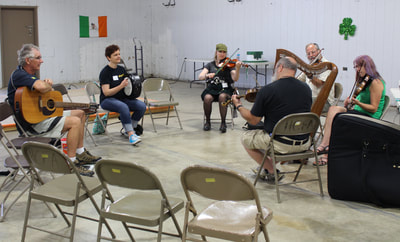
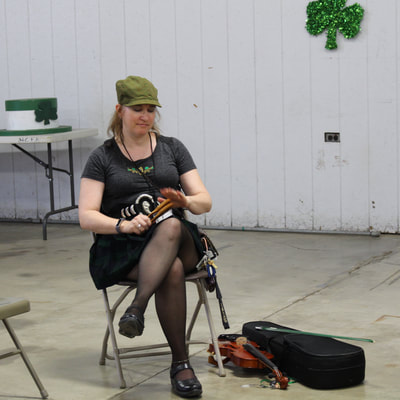
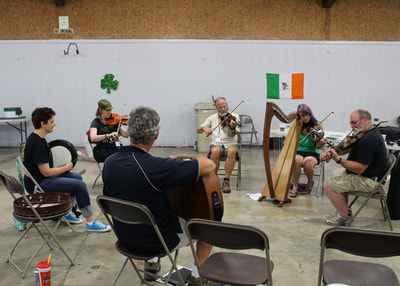
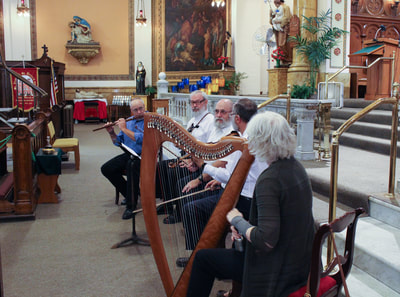
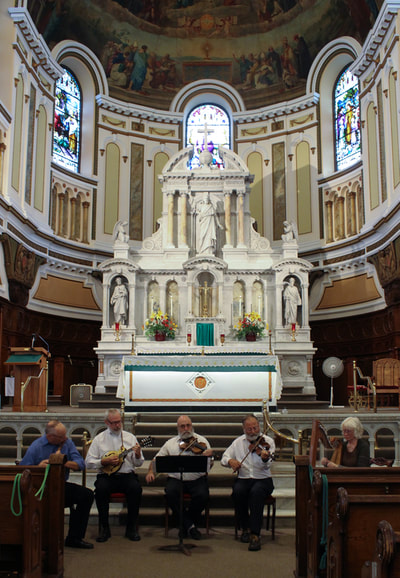
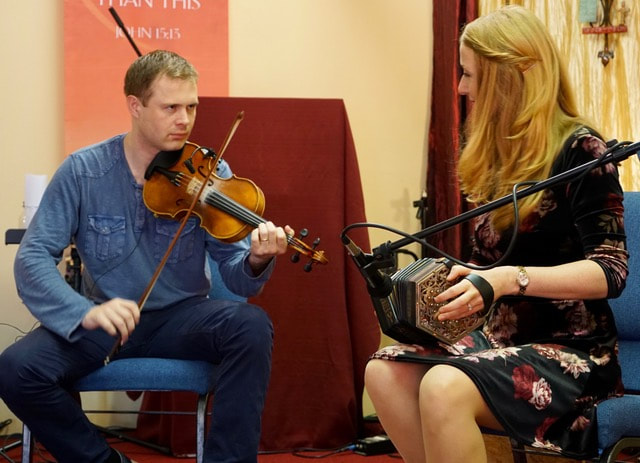
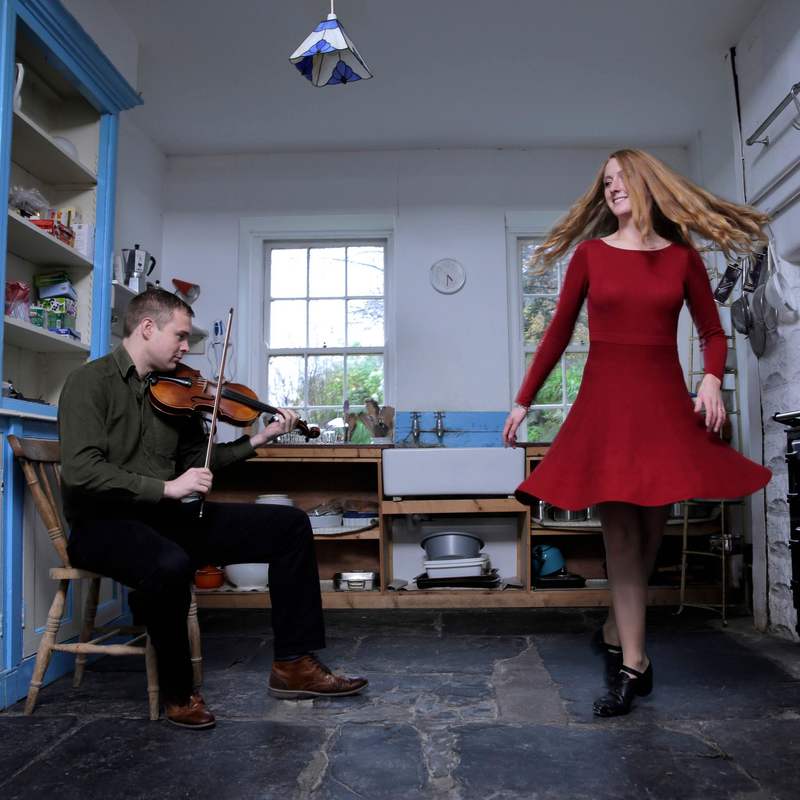
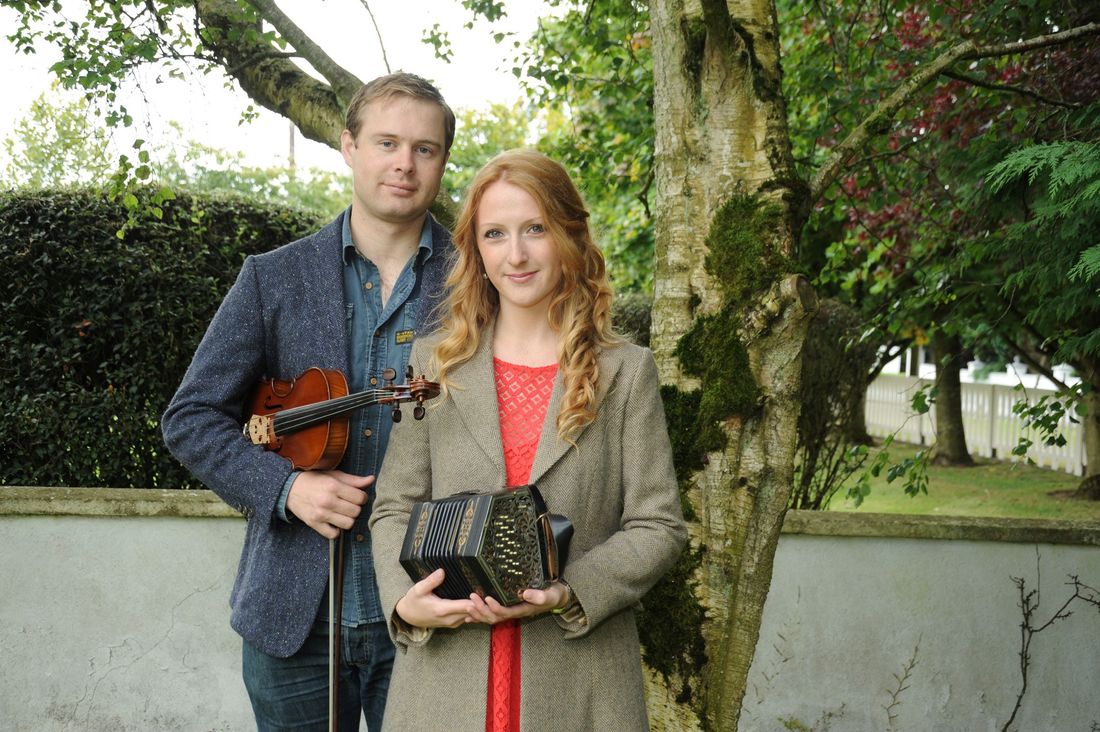
 RSS Feed
RSS Feed